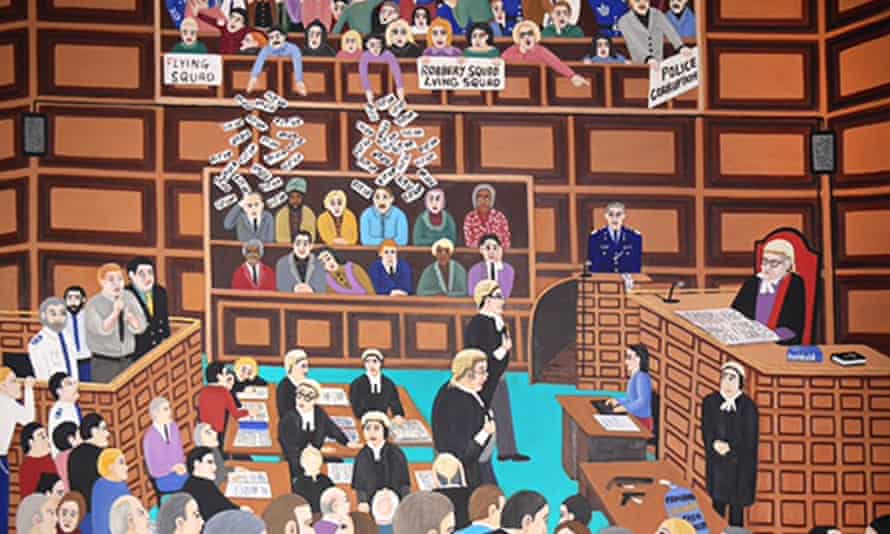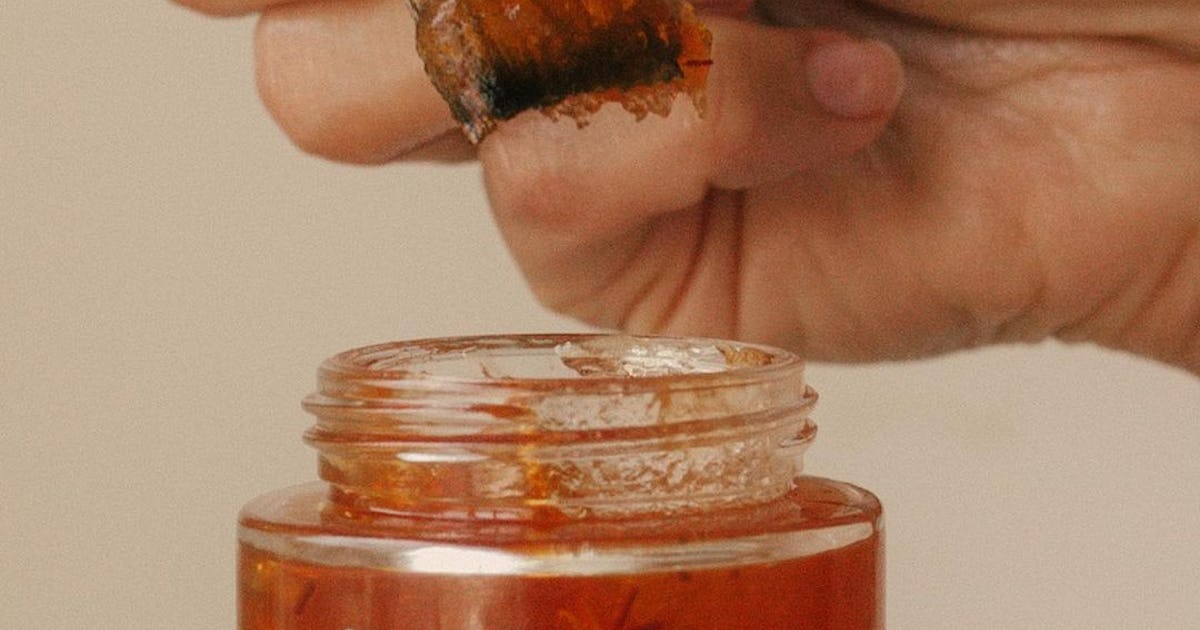There’s a combat likely on in the public gallery, a person of the defendants is shouting from the dock, the prosecuting counsel is hoping to capture the judge’s eye, a sawn-off shotgun and a pistol lie on a desk as proof and 1 of the jurors has fallen asleep. This is The Trial, one of the numerous paintings capturing actual occasions designed by armed robber turned artist, Jack Murton, as aspect of an exhibition in east London in July.
Murton was involved in some of the tales explained to. 1 canvas, Loss of life of a Buddy, is set in a cell block in Maidstone prison where by an inmate has just hanged himself. On the Pavement and A Image of Criminal offense both exhibit robberies in progress. Shoot to Kill data a deadly shooting by a law enforcement marksman. Each and every photograph tells a genuine criminal offense story.
Murton, now 63, was convicted of an armed robbery of a Securicor van in 1984 and jailed for 12 yrs. He experienced already served time in borstal and prison for offences ranging from grievous bodily hurt to arson. “I was a failure as a prison,” he claims, sitting surrounded by canvases in his west London flat, close to Portobello Road. “Crime introduced me tons of jail time and no riches.”
He experienced small curiosity in artwork right up until he was jailed in Maidstone. “I was sitting down in a mobile with two drug dealers,” claims Murton. “I was not interested in art, but these men experienced catalogues that they acquired despatched to them from Sotheby’s. We had been puffing joints one day – it was a sort of hippie porridge in there – and my mate, who was a good friend of Lucian Freud, was flicking by them. A thing caught my eye and I said, ‘Can I have a appear at that?’ He mentioned, ‘Course you can, Jack.’ He was posh, well-educated, a drug dealer who had been born on the proper side of the tracks, a center-class guy who wanted to be a legal – his siblings have been health professionals and so on.”

The photograph in the catalogue was of Turner’s The Fighting Temeraire. “It reminded me of the colors – golds and mauves – that I noticed when I took LSD when I was 13. My close friend have to have viewed there was a spark of fascination and he inspired it.”
Murton begun to look into art kinds. “I seemed at the fauvists and I observed naive paintings which I didn’t know existed. I arrived across Rousseau and then I noticed Beryl Cook dinner. What that showed me was that there was a design and my painting could maybe just come underneath that umbrella. There is nevertheless a lot of snobbery about naive art – some people today glance at it and say ‘my child could do that.’”
It was not until he was moved to Blantyre Dwelling prison in Kent, which had a history of operating with critical offenders, that he in fact started to paint. “I was hardly ever heading to paint in Maidstone since I was much too busy preserving fit to retain risk-free – punch-bags and bodyweight-coaching and things. Blantyre Residence was unique.”
In fact it was. Blantyre was a courageous experiment in detention, its intention to rehabilitate prisoners by giving them have confidence in and accountability, significantly as Barlinnie jail in Glasgow had performed in the 1970s, which led to the emergence of the artist, Jimmy Boyle. The system paid dividends and Blantyre Property acquired the lowest re-offending charges – 8% – in the process.
“The attractiveness of that position below the governor, Jim Semple, was self-perseverance. The ethos was ‘do some thing but don’t do nothing’. The fact that they permitted a person to obtain in them selves what they definitely required to do was the magic ingredient that no other prison could emulate. I started off undertaking marbling, which was all the rage at the time, and then I went on to painting. I loved it. I would not leave the artwork space!”

Blantyre is closed now, a person of the victims of a prison justice policy accused of getting a lot more anxious with retribution than rehabilitation, a earth portrayed in the the latest BBC series, Time, prepared by Jimmy McGovern, which Murton felt produced an all-as well-precise effect of jail everyday living: “I’ve seen all that in the massive prisons – throwing boiling h2o and sugar at individuals, the psychological pressure inmates try out to place on a person a further, the bullying.”
Though in Blantyre, he made a video diary for the BBC about lifestyle within, and on release he labored on Prison Weekly for BBC2, which appeared at all factors of incarceration. Since then he has created a living with his painting – albeit some of it the more regular form: decorating people’s residences.
As for these events in the paintings, “some of the issues in The Trial occurred through my very own scenario. The leaflets and the struggle in the gallery were in the course of someone’s murder demo. And the juror sleeping retained happening all through a south London armed robber’s demo. I’ve merged them into 1 portray.” The mate who hanged himself in Maidstone in 1987 was a male identified as Paul Forte. “He was in for medications and bought seven many years. A pretty sensitive guy. Prison was just too harsh for him.”
Murton’s paintings will be on show in east London, just close to the corner from Vallance Highway, at the time the headquarters of the Kray twins but now a neighbourhood rather additional probable to have a gallery opening than a gangland shootout.
Thirty Years by Jack Murton is at The Brick Lane Gallery, 14-18 July



















/https://specials-images.forbesimg.com/imageserve/604ad3acf728cc29468fec2e/0x0.jpg?cropX1=0&cropX2=846&cropY1=47&cropY2=523)
![See Inside the Amazing Homes of State Music’s Queens [Pics]](https://townsquare.media/site/204/files/2020/08/tim-mcgraw-faith-hill-mansion-california-pictures.jpg?w=1200&h=0&zc=1&s=0&a=t&q=89)









